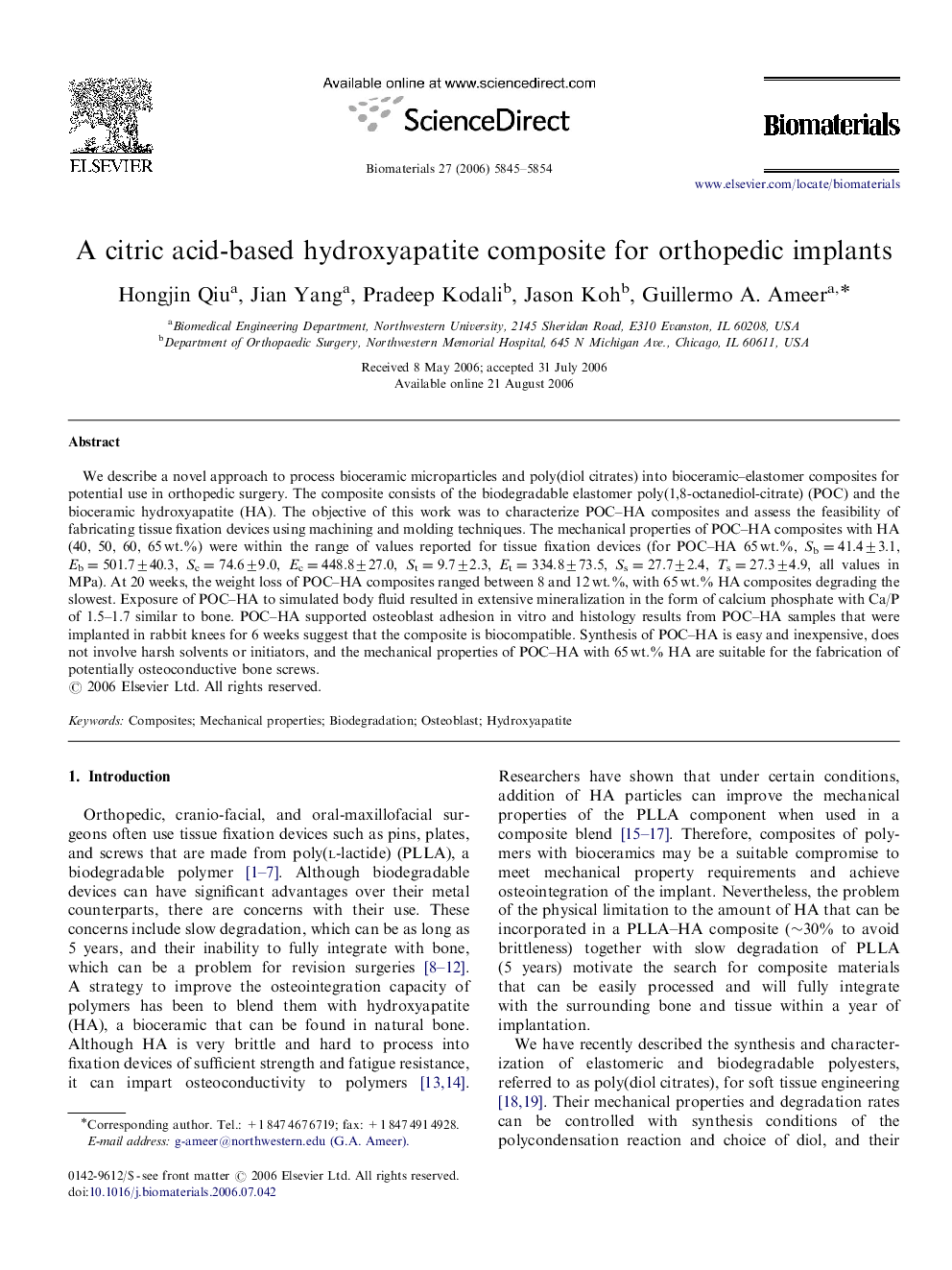| Article ID | Journal | Published Year | Pages | File Type |
|---|---|---|---|---|
| 10539 | Biomaterials | 2006 | 10 Pages |
We describe a novel approach to process bioceramic microparticles and poly(diol citrates) into bioceramic–elastomer composites for potential use in orthopedic surgery. The composite consists of the biodegradable elastomer poly(1,8-octanediol-citrate) (POC) and the bioceramic hydroxyapatite (HA). The objective of this work was to characterize POC–HA composites and assess the feasibility of fabricating tissue fixation devices using machining and molding techniques. The mechanical properties of POC–HA composites with HA (40, 50, 60, 65 wt.%) were within the range of values reported for tissue fixation devices (for POC–HA 65 wt.%, Sb=41.4±3.1, Eb=501.7±40.3, Sc=74.6±9.0, Ec=448.8±27.0, St=9.7±2.3, Et=334.8±73.5, Ss=27.7±2.4, Ts=27.3±4.9, all values in MPa). At 20 weeks, the weight loss of POC–HA composites ranged between 8 and 12 wt.%, with 65 wt.% HA composites degrading the slowest. Exposure of POC–HA to simulated body fluid resulted in extensive mineralization in the form of calcium phosphate with Ca/P of 1.5–1.7 similar to bone. POC–HA supported osteoblast adhesion in vitro and histology results from POC–HA samples that were implanted in rabbit knees for 6 weeks suggest that the composite is biocompatible. Synthesis of POC–HA is easy and inexpensive, does not involve harsh solvents or initiators, and the mechanical properties of POC–HA with 65 wt.% HA are suitable for the fabrication of potentially osteoconductive bone screws.
